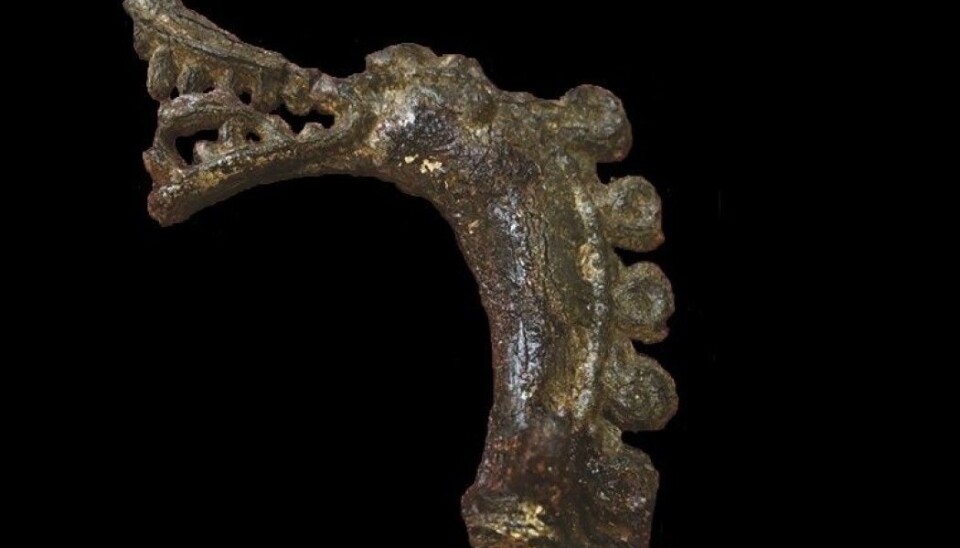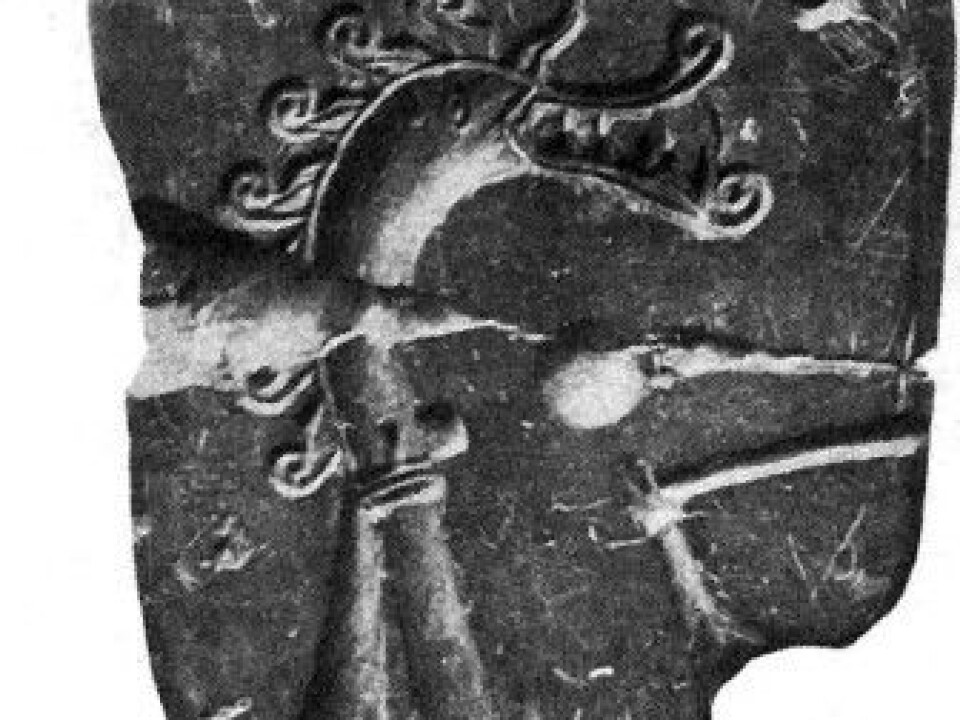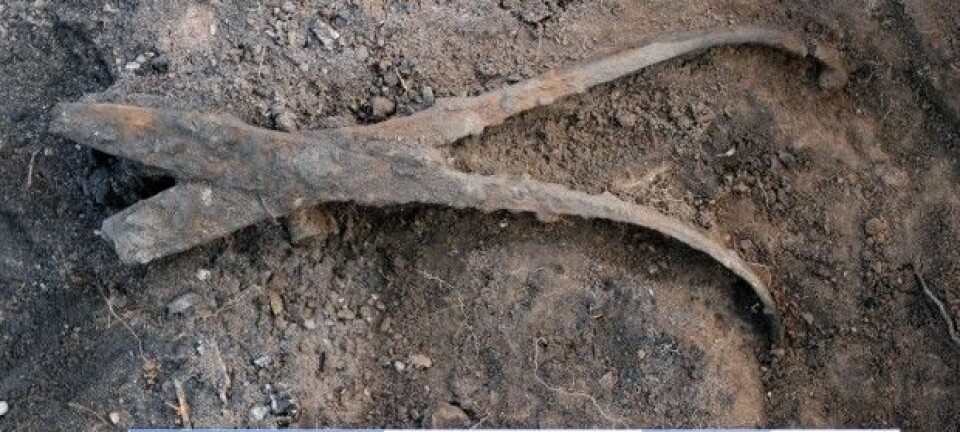
A tiny dragonhead illuminates life in a Viking trading town
This little head dates from the Viking Age and was produced in unique style.
Birka, in southeastern mid-Sweden, is one of very few known Viking towns in Scandinavia. It was a major port and long-distance trading centre beginning around AD 750 until the end of the 900s.
Although the site has been studied and excavated for more than a hundred years, a new project in 2015 called “Birka’s Black Earth Harbour” gave archaeologists a second chance to see what they could find in the harbour.
The goal of the project was to investigate the physical nature and chronological development of the Viking harbour structures. But as they dug in the soft sediments next to the remains of an 1100-year-old jetty, the archaeologists were thrilled to find a small dragonhead coated in rust and muck.
It weighs only 13 grams, is made of a tin alloy, and has a small hole in the bottom. Archaeologists think this means it was attached to a pin and could be used as a brooch or dress pin. It has been preliminarily dated as from the 800s. The Viking Age is generally accepted to have begun in the late 700s, ending in 1066.

But what really excited the researchers is that they had seen a similar dragon-like head before. The artefact can be directly linked to a well-known casting mould discovered by the Swedish History Museum in 1887. The mould was used to cast dragonheads in Birka during the Viking Age.
"It is very interesting that the researchers can connect this artefact to the mould, since it illustrates something that is very typical of central places like Birka, which is that there were handcrafts there," said Elna Siv Kristoffersen, a professor of archaeology at the University of Stavanger. Kristoffersen was not involved in the Birka research.
Unique style, high status
The researchers describe their findings in the magazine Antiquity, arguing that this is a very special style represented only by the broken dress pin and mould, and that it is exclusive to Birka.
Although the dress pin and the mould look very similar, the dress pin could not have been cast in the mould. Both heads have different styles of curls that extend down the neck, like a kind of mane. And the number of curls does not match.
Although the dragonhead is not made of a precious metal, such as silver, the researchers say that such a pin was likely a sign of high status.
The researcher Hedenstierna Jonson has argued that these dragonhead pins were worn by people who bore military banners on the Viking ships, which the researchers think is particularly interesting since it was found at the bottom of an old harbour pool.
However, some researchers wonder whether or not this particular creature is actually a dragon.
A mythical beast
"I would have liked a more critical review in this article about what they really mean by dragon," says Kristoffersen.
She explains that some researchers have argued that dragons have to have wings to be called dragons, based on early descriptions of alleged living dragons. The Greek historian Herodotus, who wrote in the fifth century BC, described dragon-like animals that lived in today's Middle East.
Many other mythical animals are also represented in Nordic animal heads, such as special horses and sea serpents.
The most famous serpent is perhaps on the prow of the Oseberg ship, where it looks like a spiralling serpent head, according to the University of Oslo’s Museum of Cultural History, which operates the museum where the ship is exhibited.
Other researchers have said that the Birka dragonhead looks more wolf-like, but the researchers behind the new Antiquity article have chosen to call it a dragon.
-------------------------------------
Read the Norwegian version of this article at forskning.no.






